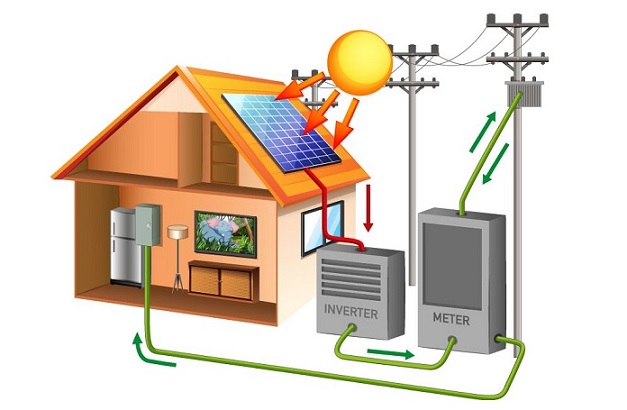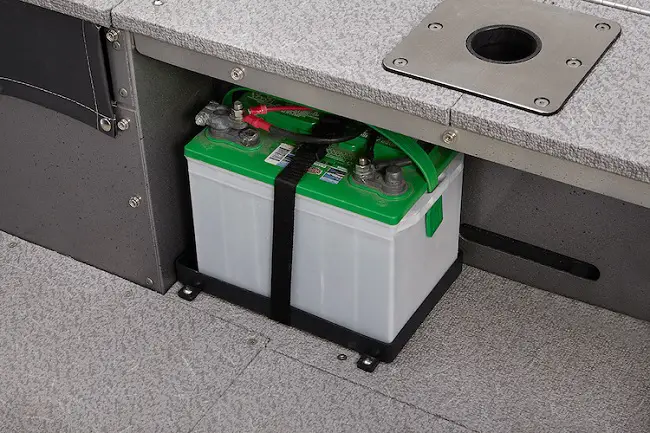Solar electric systems are one of the cleanest sources of energy. On top of that, it is easy to maintain and works with many devices. Because of these reasons, installing a solar electric system might look like a good idea.
If you want to set up a solar electric system, you will have to get the right component. With this in mind, you should get the ideal size of polar panels, batteries, and inverters.

How to Calculate Solar Panel, Battery, and Inverter
If you want to calculate the size of a solar panel required for your home, you will need to estimate your solar power needs, your current wattage needs, and expected sunlight in your area. As for the inverter size, choose one that has the same value as the maximum wattage.
How Can I Calculate the Right Size Solar Panel?
Here is a quicker way to calculate the number of solar panels for an electric supply system. In this example, we will be looking at a 150-watt load.
- Multiply the watt load by the expected duration of usage. So, if you want to use 150 watts for 10 hours, you will have the total power of 150 x 10 = 1500 watt-hours.
- Find the ideal size by dividing the watt-hours by the expected duration of sunlight. Let’s use 10 hours of sunlight for our example.
1500 watt-hours ÷ 10 hours = 150-watt solar panel.
How Can I Calculate the Solar Battery Requirement For My Building?
If you want to calculate the size of the solar battery, you should use the following steps. To help you understand better, we will be using a 150-watt load and 12v battery for our calculations.
- Multiply the load by the expected hours of usage (10 hours). That is, 150 × 10 = 1500 watt-hours.
- Divide the watt-hours by the Volt rating of the battery: 1500 ÷ 12 = 125 Amp Hours
- A 125AH 12V battery is the best size for this solar electric supply system.
How Can I Calculate My Inverter Requirement?
There isn’t much math to do especially if you want to choose an inverter for your solar electric system. If you want to choose an inverter, pick a model that has the same value or rating as the maximum load wattage. For instance, if you have a maximum load wattage of 150w, select an inverter with a 150 rating.
Are There Other Calculations that I Should Do?
Before choosing a solar panel, you will have to consider some factors. For instance, consider the amount of energy that your building might need and the climate of your area. It would also help if you determined the amount of free space – that your roof will offer for the panels – and the required wattage for your building.
To get this information, you might need to work with some figures. If you have these details, the installer can use them and provide a high-quality system for your home.
Determine the Energy Requirements of Your Building
You can find the energy requirements of a building by checking previous electricity bills. Then, multiply the energy used in your home for an hour with peak sunlight hours of every hour. To get the number of panels, divide the answer by a high wattage panel and a low wattage panel.
Find the Required Amount of Watts
To find the wattage for your space, check your recent electricity bills and look under the Kilowatts Used subheading. Remember to take note of the specified time duration during which the wattage was used.
You can also use the following steps to calculate the amount of wattage used in one hour.
- Subtract the previous meter reading from the most recent meter reading.
- Divide your answer by 30 or 365 days.
- Divide by 24 hours to get the average amount of energy that is used in a day.
Find the Amount of Energy That Your Solar Panels Might Offer
Here, you will have to determine the amount of energy that your panels will produce within one hour.
Start by multiplying your hourly energy usage by 1000. Then, divide the required average wattage by the daily sunlight peak hours of your location. You can get the information on the sunlight peak hours from the Renewable Resource Data Centre website.
Wrapping Up
After getting the ideal size of components for your system, you can enjoy stable energy and recharge the battery without any issues. If you don’t feel up to working with numbers, consult a professional to provide an estimate that meets the requirements of your building.


